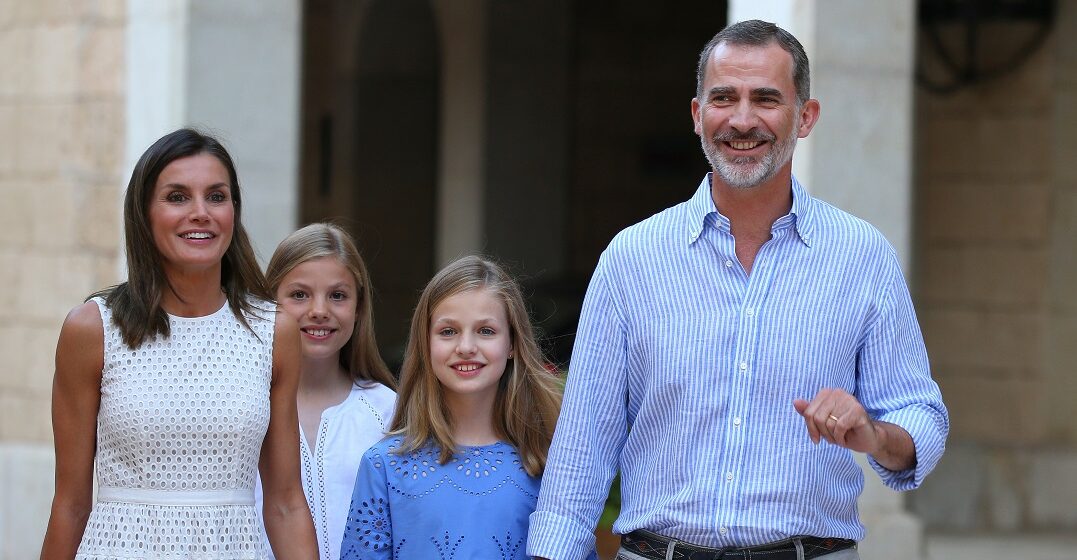by Laura Jones
Published on July 28, 2023
Is there still a royal family in Spain? There sure is. As well as performing an important role in the country, Spain’s royal family makes regular appearances in glossy magazines across Europe. We’re here to give you a brief overview of the rich history of one of Europe’s best-known monarchies — and speculate about what might come next for the Spanish royal family.
The history of the monarchy in Spain is a long one. The main players we’ll focus on here belong to the House of Bourbon, the present rulers of Spain. The house traces its lineage back to Philip V, who became king in 1700, though the Bourbon dynasty has been overthrown three times since.
Most recently, in 1931, King Alfonso XIII went into exile when the Second Spanish Republic was declared. The Bourbons returned to prominence in 1975, after the death of Francisco Franco, when King Juan Carlos I ascended the throne. Juan Carlos I shepherded Spain toward democracy and led the country into the European Union in 1986.
Felipe VI became king in 2014 and remains at the head of the royal family as of 2023. Other prominent Spanish royal family members include Queen Letizia (Felipe’s wife) and their daughters, Leonor (the heir presumptive) and Sofía.
The former king, Juan Carlos I, abdicated the Spanish throne in 2014. He remains a well-known, though controversial, member of the royal family along with his wife, the former Queen Sofía.
Spain is a constitutional monarchy, and the royal family’s role is apolitical and neutral, with limited power. The Spanish royal family is a symbol of Spain’s unity and permanence, according to the Spanish Constitution.
Still, the monarch does carry out some important ceremonial duties. These include the sanctioning of laws and the appointment of members of government on the proposal of the president. The Spanish monarch also commands the Spanish Armed Forces.
Family members take part in numerous public and private engagements and support various charitable and social causes. Queen Letizia, for example, is known for championing women’s issues and development aid.
The future of the Spanish monarchy often sparks debate. Controversies surrounding former King Juan Carlos I have somewhat tarnished the institution’s reputation. King Felipe VI and Queen Letizia’s efforts to modernize the monarchy and implement transparency measures provide some reassurance to the Spanish people.
Princess Leonor is also being prepped as a modern ruler for all of Spain. She finished high school in Wales and will complete three years of training with the Spanish Armed Forces. She speaks several languages, including Spanish, Catalan and English.
However, there are also questions as to whether the monarchy really symbolizes unity, with many in Catalonia and the Basque Country rejecting its authority altogether. In 2020, a poll found that just over 40% of Spaniards wanted a republic, while just under 35% supported the monarchy.
The Spanish royal family remains integral to Spain’s constitutional framework and embodies a blend of tradition and modernity, at least with the present ruler, King Felipe VI. Members of the family have served as meaningful figureheads in Spain for many centuries, though for how long they will continue to do so is unknown. The future of the Spanish monarchy will undoubtedly continue to evolve as the dynamics of Spanish society change.
